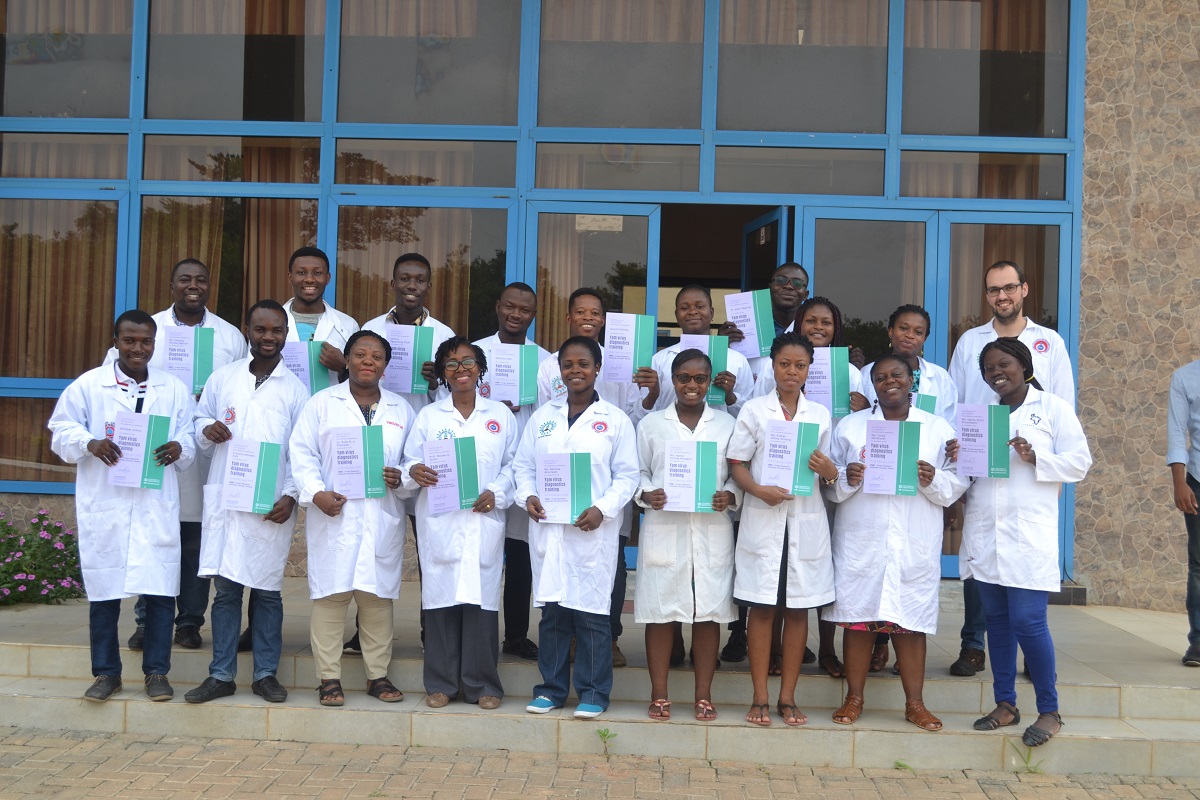
Yams look similar to sweet potatoes – they both grow herbaceous vines and produce edible tubers. Their taste, however, is quite different – yams are starchier and more potato-like whereas sweet potatoes are sweeter with a creamy texture. In West Africa, yam (Dioscorea spp.) is a preferred staple food for over 300 million people where the crop is prepared in different ways to make a variety of dishes.
However, yam productivity is severely compromised by the impact of viruses and by the lack and high cost of virus-free planting material. Like sweet potato, yam is propagated vegetatively, meaning that edible tubers known as ‘seed yams’ are planted. Traditionally, farmers save their seed yams from one generation to the next. This system has led to endemic pathogens persisting in the germplasm over generations, and ultimately production in the field is compromised.
Ghana is the second largest producer and leading exporter of yams worldwide. The availability of a ready and reliable source of certified virus-free, premium-quality planting material is critical in Ghana, where farmers obtain their planting material – often of low quality and infected with viruses – either from their own farms, or through any surplus from neighbouring farmers. There is the need to utilize cutting-edge technologies that facilitate the availability of virus-free seed in required quantities to supply industry and other users. However, the lack of a formal seed system and high costs associated with seed yam production are a major constraint to yam productivity in the country. To meet this increasing demand, Ghana’s Biotechnology Laboratory of the Council for Scientific and Industrial Research-Crops Research Institute (CSIR-CRI) developed an aeroponics and hydroponics system to boost the production of seed yam. This system has a very high multiplication rate and thousands of plantlets can be generated from a single plant. However, virus titres (quantities) in the generated tissues are generally decreased but not eliminated. This poses an increased challenge for reliable virus detection, which makes it difficult to ensure that planting material is virus-free.
Through a collaborative research project between NRI and CSIR-CRI, funded by the Royal Society in the UK, NRI’s Professor Sue Seal and Dr Gonçalo Silva are using High-Throughput Sequencing to strengthen the yam seed systems in Ghana. High-throughput sequencing describes technologies that sequence multiple DNA or RNA targets in parallel, enabling millions of sequences to be generated at a time. This has the advantage that the virus status of germplasm can be obtained for multiple known as well as novel viruses in a rapid and relatively cost-effective manner.
This project will transfer the state-of-the-art diagnostic techniques to Ghana to improve capacity for yam disease diagnostics and seed certification in the country. The project aims to ensure the timely availability of virus-free seed yams at low-cost, thereby establishing a sustainable seed system and contributing towards the safe distribution of yam germplasm. CSIR-CRI has accredited a virus-indexing cassava test and through this project the team will set up the facility to accredit the test for yam diagnosis which will subsequently enhance NRI’s laboratory quality management system.

